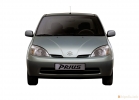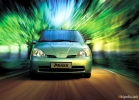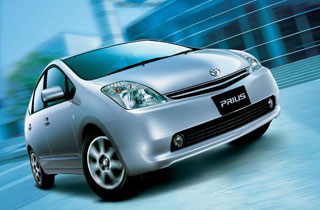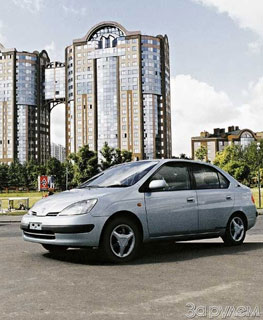Toyota Prius 1997 test drive - 2004 hatchback
Toyota Prius car overview
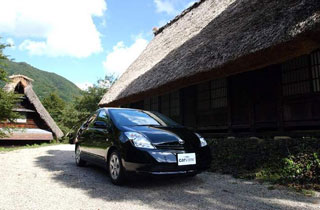 General
General 6 years have passed since the first generation of Toyota Prius (Prius), which was the first passenger hybrid car in the world. And in complete combat readiness, a new generation of Prius appeared. As the task of developing this model, Toyota gave a high priority to turn it into a regular machine. Maybe this will seem somewhat unexpected, but I, as the former owner of the first -generation Prius, think that this can be approved. This is due to the fact that the first generation had several unusual moments.
Naturally, I do not repent at all that I bought a first -generation Prius. I traveled to it for about a year and a half, the average fuel consumption was expressed by such very magnificent numbers as 6.9 l/100km, and this gave a sense of pride that I used the world's first hybrid car. In addition, he surprised that despite the diverse application of the world's world's world, there were almost no problems (although this may be natural for Toyota cars).
But on the other hand, the fact is that some moments caused displeasure. First of all, this is discomfort from the work of the brakes, as well as the unreliability of the chassis when driving along the high -speed road, insufficient dynamic characteristics, appearance, which, even in the form of a compliment, cannot be called pretty, etc. Two moods came across - this is the first option, so there is nothing to be done, but if you look at it as a separate car, and a year and a half after the purchase, the second began to prevail over the first.
Let's get back to the new model. An ordinary machine that Toyota sought to means such a machine in which these shortcomings are eliminated. But, ultimately, did the new Prius model become a truly ordinary machine?
Exterior and interior
First, take a look at the appearance. The former model was a 4-door sedan of the Corolla class, and the new model has a size larger, and it turned into a 5-door car with a rear-lover door. At the same time, the width reached 1725 mm, exceeding the 5th size frame by 2.5 cm. This, apparently, can be considered one of the examples of the Toyota response, which gave the machine competitiveness for the market of Europe and America, thinking simultaneously about the Japanese market. After all, if you look international, then in the C/D segment, which belongs to Prius, it clearly has weak competitiveness as a 5th-size machine, which has a limit for 1700 mm. Therefore, an increase in size is a very reasonable step. In fact, additional centimeters gave a considerable advantage for the rich external design of the sides of the body. If you look at the Prius of a new model near, then there is a feeling that it looks like a class above the Toyota Premio sedan. At the same time, an increase in the length of 135 mm and the wheelbase by 150 mm is directly related to the increase in the space of the cabin, and especially the space for placing the knees in front of the rear seat.
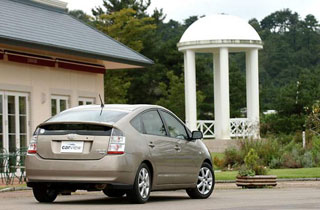 The finish material does not shine at all with a luxury, but the futuristic interior with a variety of use of aluminum decoration looks very fresh. However, the design around the liquid crystalline monitor, which is naturally installed in the upper part of the central console, causes some doubts. If we take into account the character of such a machine as Prius, or if you compare with the atmosphere of the interior, I would like to give the original design so that the monitor becomes its key element. Maybe the case will not come to Bang & Olufsen, but if they collaborated, for example, with Sony, I think that the design would become more stylish and futuristic.
The finish material does not shine at all with a luxury, but the futuristic interior with a variety of use of aluminum decoration looks very fresh. However, the design around the liquid crystalline monitor, which is naturally installed in the upper part of the central console, causes some doubts. If we take into account the character of such a machine as Prius, or if you compare with the atmosphere of the interior, I would like to give the original design so that the monitor becomes its key element. Maybe the case will not come to Bang & Olufsen, but if they collaborated, for example, with Sony, I think that the design would become more stylish and futuristic. I asked the developer a question about turning the car into a 5-door hatchback, and he simply replied that this was done to increase ease of use. Naturally, a 5-door hatchback is more convenient to use than a 4-door sedan. I asked: so why didn’t they make a station wagon?, What the same developer said: such an alternative is also available. Toyota has already announced a course for hybridization of all lines. A high -class sedan (Crown) and minivans (Estima and Alphard) have already been released. It is assumed that in the near future a hybrid version of the SUV (Harrier) will also appear. In this case, the assumption that the station wagon equipped with a hybrid system is clearly included in the development program.
Performance
Toyota offers two options for the new Prius model. The first option is standard, with 15-inch tires. The second is a modification called Touring Selection, equipped with 16-inch tires and aerodynamic details. When the car is moving, an improvement in dynamic qualities is immediately felt compared to the previous generation. The new Prius model uses a power source in which the voltage is increased to 500 V (against the previous 274 V) due to the voltage lifting circuit. This made it possible to increase the power of the electric motor by one and a half times. As a result, reserves have increased significantly in such modes requiring high power as start, acceleration, hill and cruising movement with high speed. In the previous model, support from the motor with about 80 km/h gradually decreased, and in the new model the pleasant acceleration supported by the engine lasts up to 130-140 km/h, which is considered a practical speed ceiling in Japan. In addition, an increase in the power of the motor also contributed to low noise. Within the limits that do not require engine voltage, the number of revolutions is restrained at a low level, and as a result, the noise level is significantly reduced. Another point is that the sustainability of support from the motor has been sustainable. While preserving the throttle, the battery was instantly exhausted in the previous model, and the machine had to drive only on the engine.
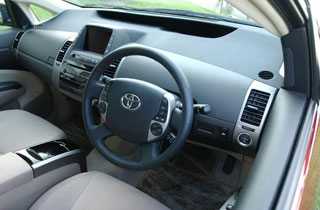 Naturally, at this moment the dynamic characteristics were significantly reduced. However, in the new model it is possible to supply the battery with electricity (charge) even with cruising motion at a speed of 180 km/h. Namely, you do not need to worry about reducing power due to a lack of electricity, with the exception of such extreme cases as movement in a circle. In general, it can be reported that Prius has dynamic characteristics that surpass cars with two -liter engines or at least are not inferior to them.
Naturally, at this moment the dynamic characteristics were significantly reduced. However, in the new model it is possible to supply the battery with electricity (charge) even with cruising motion at a speed of 180 km/h. Namely, you do not need to worry about reducing power due to a lack of electricity, with the exception of such extreme cases as movement in a circle. In general, it can be reported that Prius has dynamic characteristics that surpass cars with two -liter engines or at least are not inferior to them. As for the chassis, the brakes are significantly improved. The fundamental system of parallel use of regenerative brakes has not changed (where the braking energy returns to the battery) with conventional hydraulic brakes. However, coordinated control of regenerative and hydraulic brakes has become more thorough, which provides a natural reaction to pedal presses and an action that is completely different from hydraulic brakes. The stability with rectilinear movement at high speed has also improved significantly. However, despite the improvement of the contact of the electrhydraulic steering wheel amplifier, there is still uncertainty, and there are also reserves for improving the harsh sensation of the movement characteristic of the machine with 16-inch tires, and significant noise when driving along the road. In relation to the new Prius model, we can say that in comparison with the previous model, the possibilities of moving, turning and stopping, but in some points it was not possible to reach the level of Corolla, which can be called the best ordinary car in some points. In this sense, I would like to lay hopes for further improvement.
Nevertheless, there is absolutely nothing to object to the fact that when ensuring high practicality, it was possible to achieve such an indicator of fuel consumption as 2.82 l/100km. This leaves behind Honda Insight, which can be called a special fuel saving machine among 2-seater cars. In addition, unlike the first generation, the new model will bring firm profit if it is sold. And in the current situation, it is completely clear that Toyota hybrid technologies are superior to other companies.
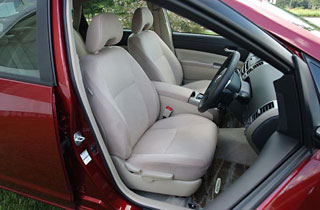
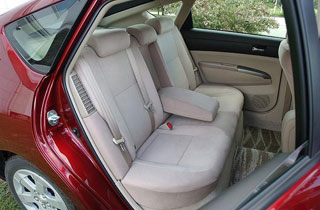
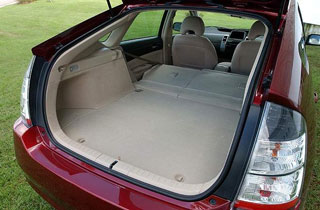
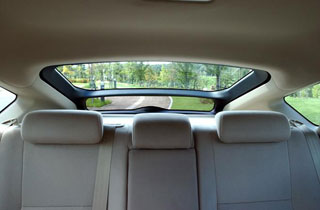
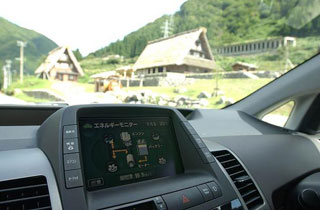
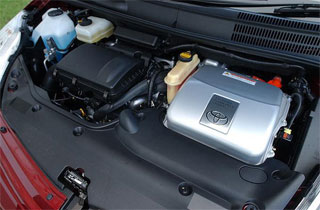
A source: CarView.co.jp


